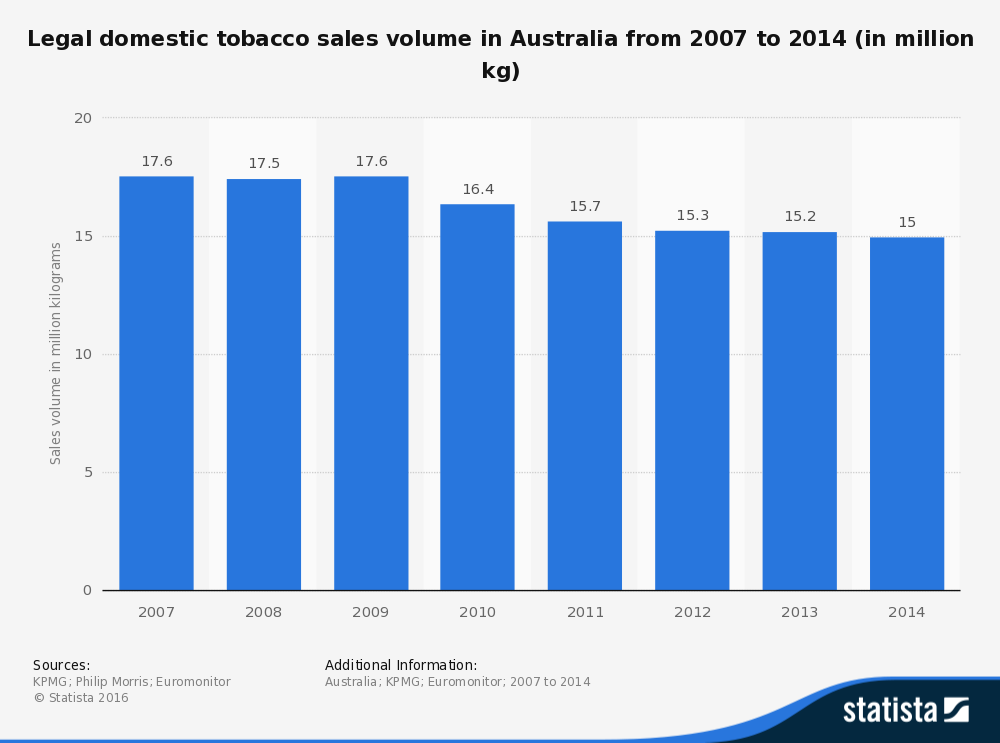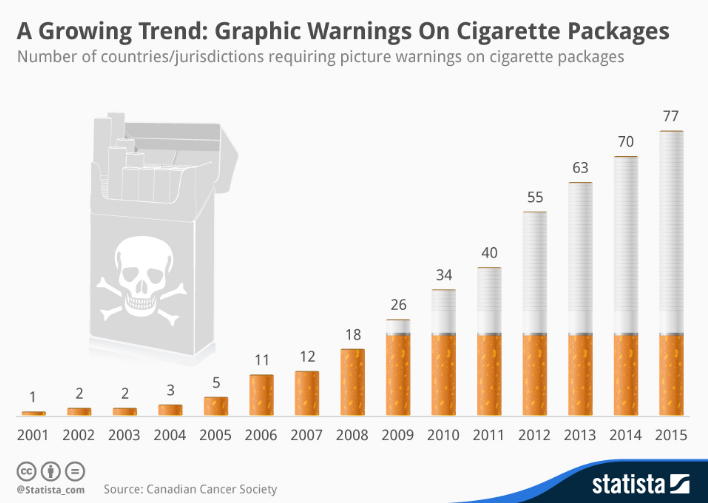May 31 marks World No Tobacco Day (WNTD), a time health risks and effective policies to reduce tobacco use are highlighted.

For this year’s World No Tobacco Day, the World Health Organization (WHO) and the Secretariat of the WHO Framework Convention on Tobacco Control are calling on countries to implement plain packaging of tobacco products.
Check out the public service announcement video for World No Tobacco Day 2016.
What is plain packaging?
Plain packaging (also called standardized packaging) refers to “measures to restrict or prohibit the use of logos, colors, brand images or promotional information on packaging other than brand names and product names displayed in a standard color and font style.”
WHO designed some posters for use around the world during this year that include warning photos on the health risks of smoking.
Goals of plain packaging
- Reduce the attractiveness of tobacco products.
- Eliminate the effects of tobacco packaging as a form of advertising and promotion.
- Address package design techniques that may suggest that some products are less harmful than others.
- Increase the noticeability and effectiveness of health warnings.
Current implementation
In December 2012, Australia became the first country to fully implement plain packaging of tobacco.
Hong Kong, China has had pictorial warning labels since October 2007 as part of the Smoking (Public Health) Ordinance of 2006. The ordinance requires that all cigarette packages have warning labels that cover 50 percent of both sides of the pack and include both Chinese and English warnings. Each year Hong Kong rotates six new pictorial health warnings.

Photo from Hong Kong Council on Smoking and Health
Evidence supporting plain packaging
In 2012, Australia started plain-packaging and evidence shows that in Australia it is reducing the sale of tobacco.

This statistic shows the legal domestic tobacco sales volume in Australia from 2007 to 2014. The Australian sales volume of legal tobacco amounted to approximately 15 million kilograms (16,500 tons) in 2014, including cigarettes and loose tobacco.
Since Canada made the initial move on pictorial warnings in 2001, the number of governments/jurisdictions requiring these ever more graphic and gruesome warnings has reached 70. By 2015, it’s expected to increase further to 77.

This chart shows the number of countries/jurisdictions requiring picture warnings on cigarette packages.
Recommendations from WHO on what should be done?
• Policy makers should consider adopting legislation or regulations to implement plain packaging of tobacco products as part of comprehensive, multisectoral approaches to tobacco control.
• This process should include establishing a formal plan and timeline for implementation of plain packaging, in line with each Member State’s tobacco control programme and priorities.
• In some cases, to prepare for plain packaging, policy makers may:
– strengthen health warnings
– strengthen bans on misleading packaging and labelling
– ensure that bans on advertising, promotion and sponsorship are comprehensive
– ensure that each of these measures is well enforced
• Policy makers should resist interference in the policy process by the tobacco industry in line with Article 5.3 of the WHO FCTC and its guidelines for implementation.
 CGTN America
CGTN America
 Photo from WHO
Photo from WHO



